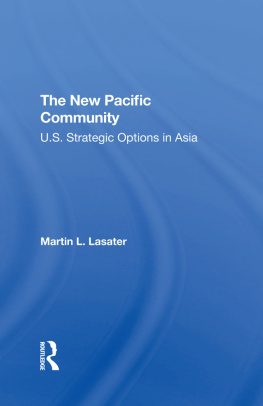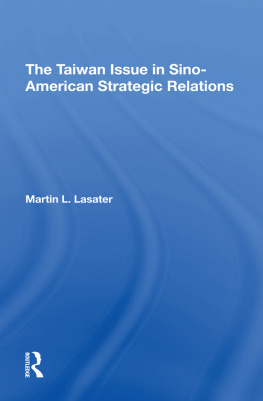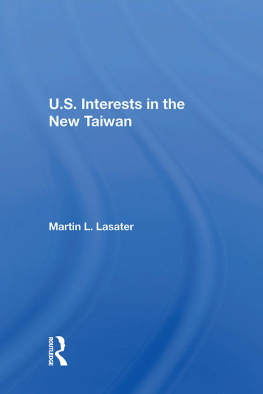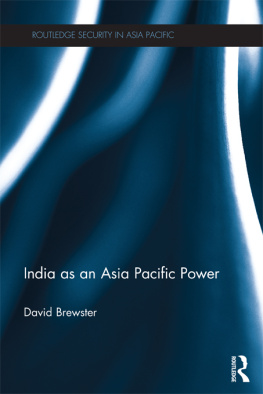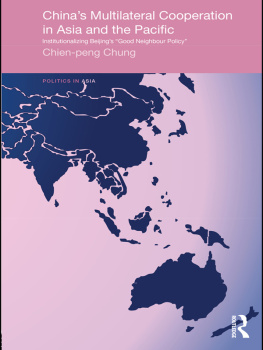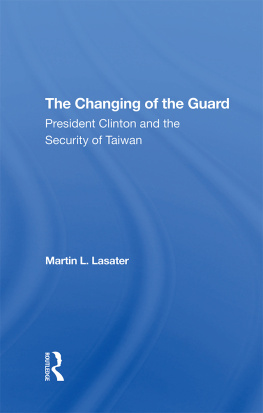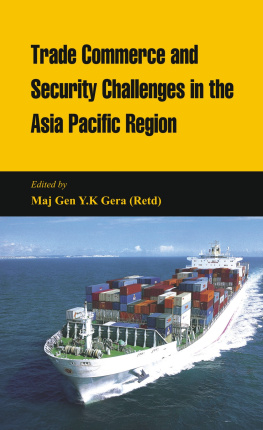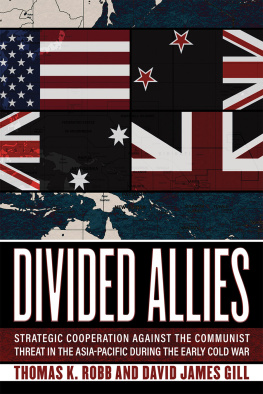First published 1996 by Westview Press, Inc.
Published 2019 by Routledge
52 Vanderbilt Avenue, New York, NY 10017
2 Park Square, Milton Park, Abingdon, Oxon OX14 4RN
Routledge is an imprint of the Taylor & Francis Group, an informa business
Copyright 1996 Taylor & Francis
All rights reserved. No part of this book may be reprinted or reproduced or utilised in any form or by any electronic, mechanical, or other means, now known or hereafter invented, including photocopying and recording, or in any information storage or retrieval system, without permission in writing from the publishers.
Notice:
Product or corporate names may be trademarks or registered trademarks, and are used only for identification and explanation without intent to infringe.
A CIP catalog record for this book is available from the Library of Congress
ISBN 13: 978-0-367-29437-3 (hbk)
U.S. strategy toward the Asian-Pacific region is important because the Pacific Rim is of vital and growing concern to the United States. Four major power centers interact in the Asia-Pacific: the United States, Japan, Rusia, and China. A fifth power center, India, is emerging in southern Asia. The Asian-Pacific region has the world's largest standing armies in close proximity to each other, and the dangers of war in Korea and conflict in the Taiwan Strait and South China Sea are palpable. Half of U.S. aircraft carrier battle groups and amphibious forces are oriented toward the Pacific Ocean, the largest military theater in the world.
With the end of the Cold War, national security has become not merely a military concern but an economic issue as well. In that regard, no region is more important to vital U.S. interests than the Asian Pacific. The region is the world's fastest growing economy, producing about 35 percent of total world trade and, together with the United States, half of the world's gross national product. The Pacific Rim is the largest U.S. trading partner, accounting for nearly 55 percent of global U.S. trade, about 50 percent of total U.S. exports, and 60 percent of total U.S. imports. Exports to Asia provide more than two million American jobs.
The growing military and economic power of Asia is creating a tripolar world comprising the Americas, Europe, and Asia. The United States needs an effective strategy toward the region to serve its security, political, economic, and cultural interests. These interests cannot be served adequately through bilateral relations, benign neglect, or nonengagement. The United States must devise a viable strategy toward Asia because it is in the U.S. interest to be engaged actively in the region and to influence its direction.
The purpose of this book is to examine U.S. strategic options toward the Asian-Pacific region for the remainder of this century. The book's focus is on the strategies, not their authors. Nor is there an attempt to be exhaustive. Great effort has been made, however, to define an operable range of strategies available to the United States for the next five to ten years.
, "The Bush Legacy in Asia," provides a brief overview of U.S. global and regional strategies during the Cold War. It then turns to a more detailed examination of President George Bush's efforts to define a new strategy "beyond containment" and to create a "new world order" comprised of a community of market democracies. Strategies of "collective engagement" and "regional contingencies" are discussed, the 1992 Joint Military Net Assessment is reviewed, and Bush's strategy and policy toward Asia are examined. The East Asia strategic initiative (EASI-I and EASI-II) reports are analyzed.
, "Principles of Clinton Foreign Policy," discusses President Bill Clinton's foreign policy and national security strategy. "Engagement" is explained, as well as the administration's "three pillars" of economic growth, military strength, and support for democracy. The strategic aspects of "assertive multilateralism," "enlargement," and the "bottom-up review" are also examined in detail.
, "The New Pacific Community," reviews Clinton's strategy and policy toward Asia. Ten U.S. policy goals are summarized, as well as "five building blocks" of the Pacific community. U.S. policies toward the Asia-Pacific Economic Cooperation (APEC) process and the North Korean nuclear weapons program are cited as examples of how Clinton's regional strategy was implemented. The U.S. Pacific Command strategy of "cooperative engagement" is examined, as well as definitive administration policy statements through 1995. The 1995 East Asian strategic initiative report (EASI-III) also is discussed.
, "USCINCPAC Studies," examines four publicly released strategic forecasts sponsored by the U.S. Pacific Command during the 1989-1992 period. Two were prepared by the Strategic Planning and Policy Directorate at USCINCPAC headquarters in Hawaii, and two were written for the USCINCPAC by the Rand Corporation of Santa Monica, California, a think-tank frequently contracted by the Department of Defense. The four studies represent transitional strategies from the post-containment era, bridging the Cold War and post-Cold War periods. All emphasize the multifaceted roles played by the U.S. military in the Asia-Pacific region.
proposals, taken from the 1991-1995 period, present a wide range of possible approaches for the United States as it interacts with Asia over the next several decades.
The concluding summarizes the strategic options discussed in the book and makes several recommendations for future U.S. strategy toward the Asian Pacific. Briefly, these recommendations include:
I wrote this book in the hope that it would stimulate study and debate over what comprises an effective U.S. strategy toward Asia. The region is too important to ignore and too large to permit easy assessment. I welcome your comments and suggestions, and I look forward to our continued dialogue on this vital subject.

